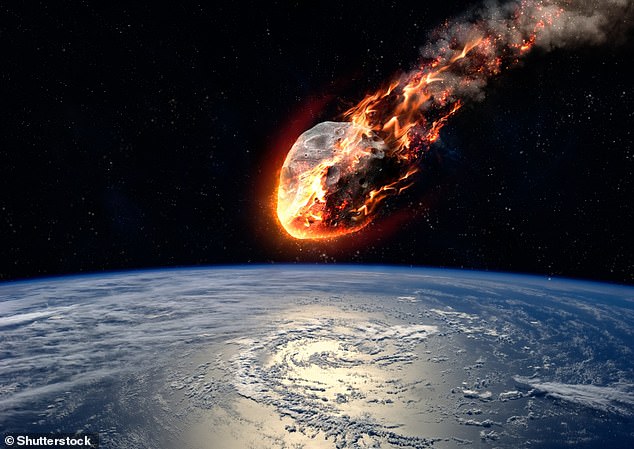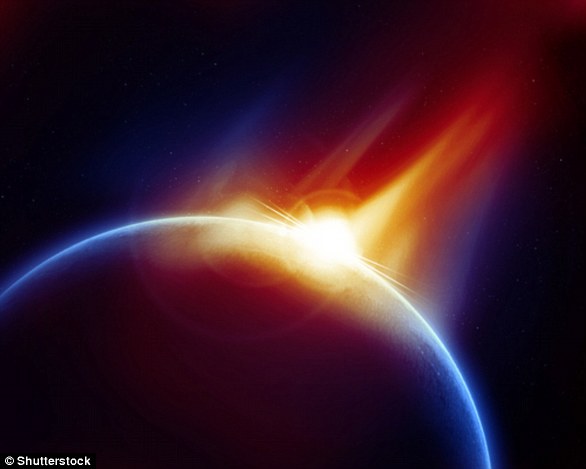It is well known that the reign of the dinosaurs came to an end when a giant asteroid crashed into Earth 66 million years ago.
But until now, the origin of this space rock was unclear.
Now, experts at the University of Cologne say the six-mile-wide asteroid traveled millions of miles beyond Jupiter before crashing into our planet.
“The fate of the dinosaurs and many other species was sealed by this projectile from the far reaches of the solar system,” said Professor Dr. Carsten Münker.
The discovery will inevitably raise questions about whether another devastating asteroid could be headed our way.
It’s well known that the reign of the dinosaurs came to an end when a giant asteroid crashed into Earth 66 million years ago. But until now, the origin of this space rock has been unclear (artist’s impression).
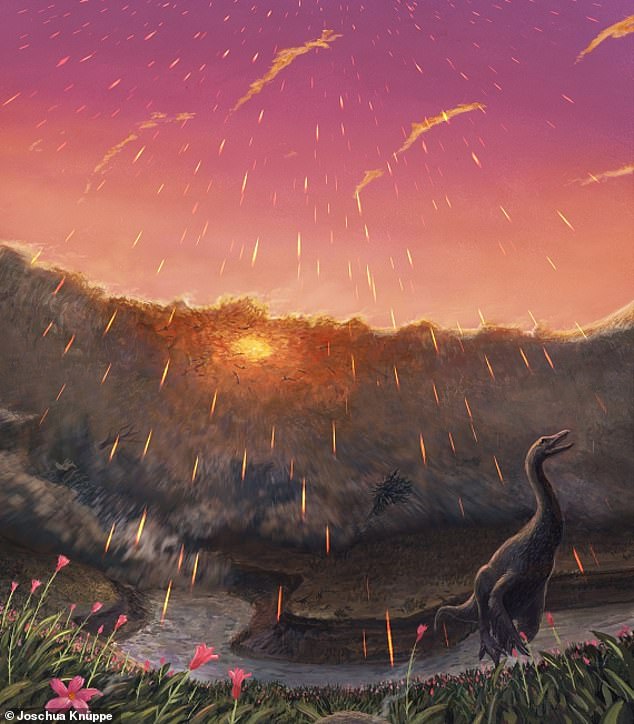
Artist’s reconstruction of the historic event, known as Chicxulub, with deadly impact spherulites falling from the sky 66 million years ago
Dr. Mario Fischer-Gödde and his colleagues say the killer rock was a huge carbonaceous chondrite (C-type) asteroid, a carbon-rich type that is common in the solar system but rarely hits Earth.
C-type asteroids formed beyond Jupiter about 4.6 billion years ago, when the solar system was born.
Dr Fischer-Gödde told MailOnline: ‘C-type asteroids represent the remnants of gas and ice planets from the outer solar system.
‘Due to the dynamic evolution of the solar system, with the early migration of Jupiter, the orbits of asteroids were altered and they were dispersed towards the inner solar system, where they are located today: in the asteroid belt.’
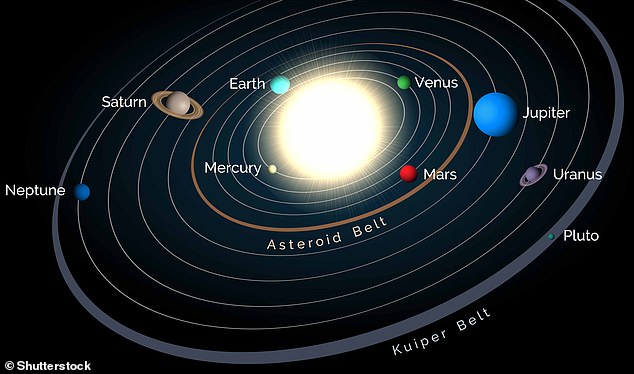
The first four planets (Mercury, Venus, Earth and Mars) make up the inner solar system, while the last four (Jupiter, Saturn, Neptune and Uranus) make up the outer solar system. The gap between the inner and outer solar systems was larger than it is today, experts report. Planet Nine is a hypothetical planet that may have existed, other studies say.
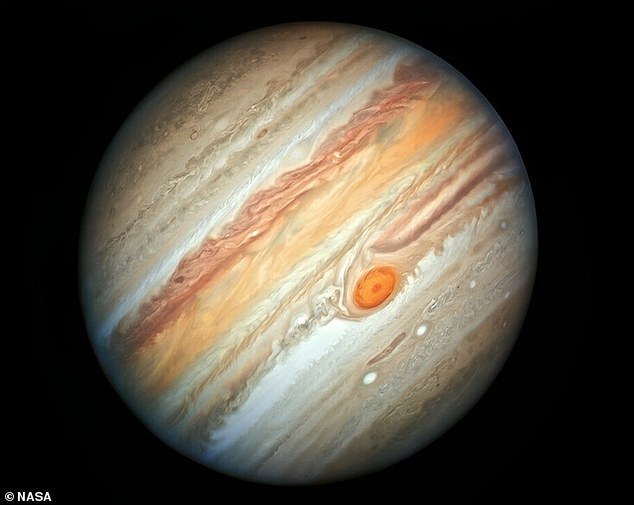
Jupiter is the fifth planet from the Sun and the largest in the solar system: it has more than twice the mass of the other planets combined.
It is well known that the dinosaurs were wiped out by the Chicxulub impact, an asteroid that crashed into a shallow sea in what is now the Yucatan Peninsula in Mexico some 66 million years ago.
For those creatures not killed directly by the impact, the collision released a massive cloud of dust and soot that partially blocked out the sun and caused temperatures to plummet.
As a result, 75 percent of all animal and plant species were exterminated.
All non-avian dinosaurs, pterosaurs, ammonites and most marine reptiles disappeared, while birds, crocodiles and turtles survived, as did some mammals, from which humans evolved.
Today, the event is marked by a thin layer of sediment called the K-Pg boundary, which can be found around the world in marine and terrestrial rocks.
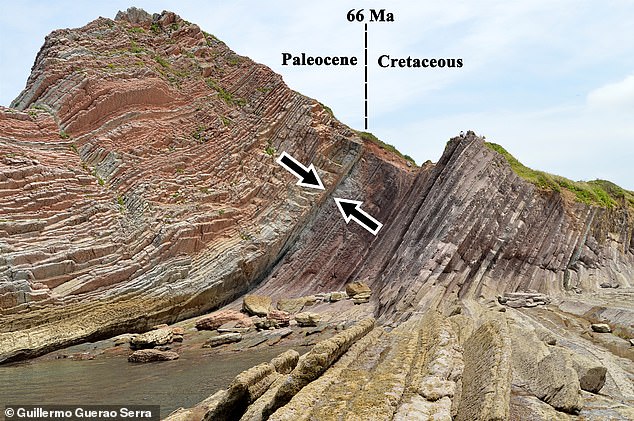
Today, the event is marked by a thin layer of sediment called the K-Pg boundary, which can be found around the world in marine and terrestrial rocks, dating back 66 million years (pictured, in Zumaia, Spain).
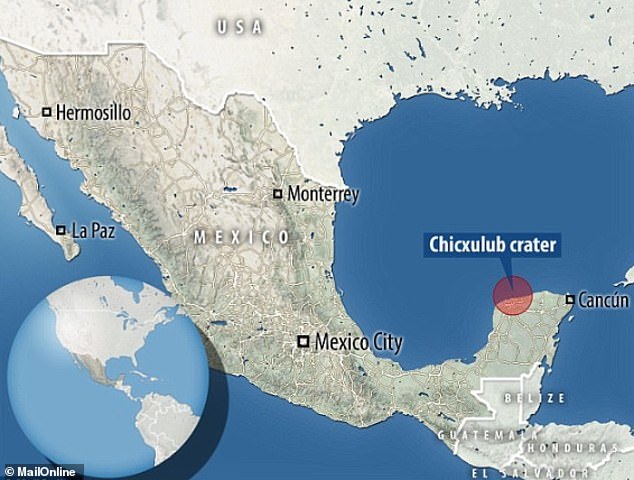
The Chicxulub asteroid crashed into a shallow sea in what is now the Gulf of Mexico about 66 million years ago.
The rocky boundary, which dates back 66 million years, shows unusually high levels of “platinum group metals” such as iridium and ruthenium, which are rare on Earth but common on asteroids.
From this, scientists determined that the Earth was hit by a huge rocky object that covered it in debris, but the origin of this object is still not well understood.
To find out more, the German team analyzed rock samples taken from the K-Pg boundary, specifically looking for traces of ruthenium in them.
For comparison, they also analyzed samples of other rocks, including from other asteroid impacts and two carbonaceous chondrites.
According to the results, the traces of ruthenium in the K-Pg boundary rocks and in the carbonaceous chondrites were the same.
This shows that the Chicxulub impactor likely came from a C-type asteroid that formed in the outer solar system.
They also rule out the possibility that the impact was caused by a comet, as other theories had suggested.
Simply put, comets are made of ice and rock, while asteroids are made of rock and metal.
While C-type asteroids are associated with the outer solar system, S-type asteroids are much more common in the inner solar system.
S-type (stony) asteroids are made of silicate materials as well as nickel-iron, and are the most common visitors to Earth among the asteroid types.
Researchers say that over the past 500 million years, almost exclusively S-type asteroid fragments have hit Earth.
More than 80 percent of all asteroid fragments that impact Earth as meteorites come from the inner solar system.
Professor Dr Carsten Münker, co-author of the study, added: “We found that the impact of an asteroid like Chicxulub is a very rare event and unique in geological time.”
The new study has been published in the journal Science.

